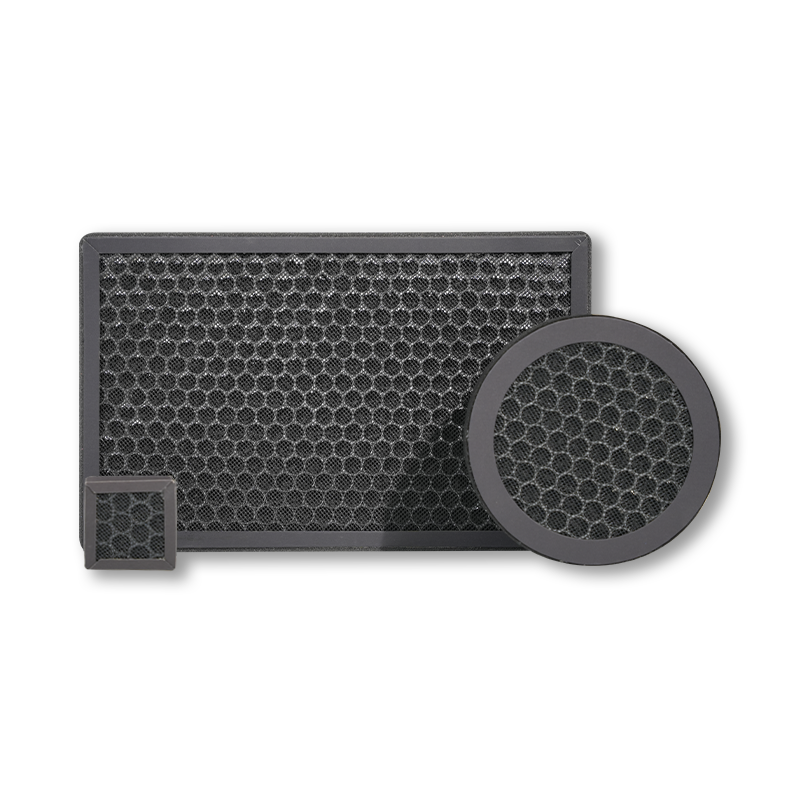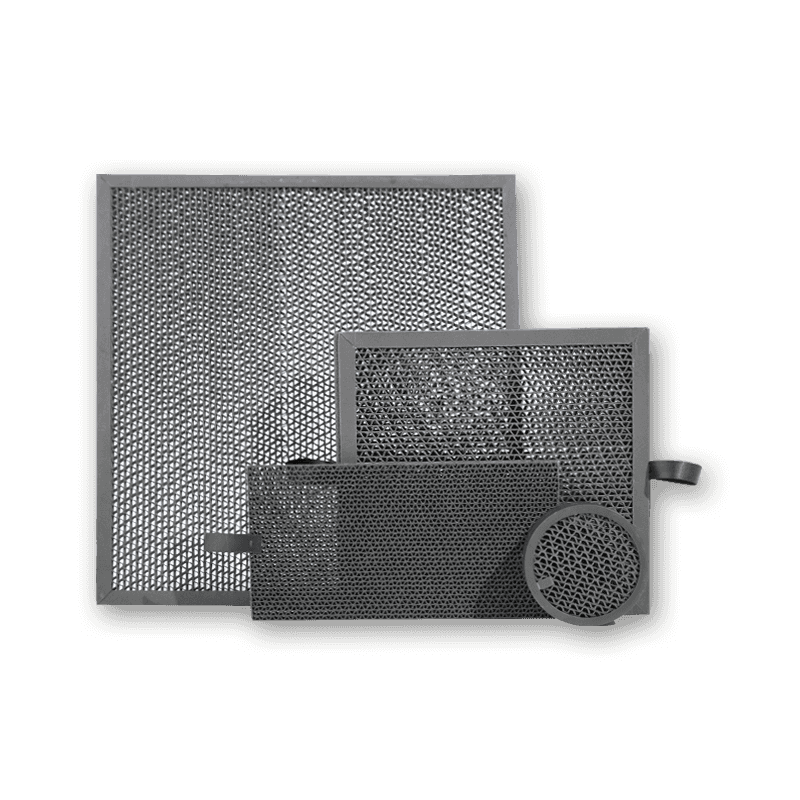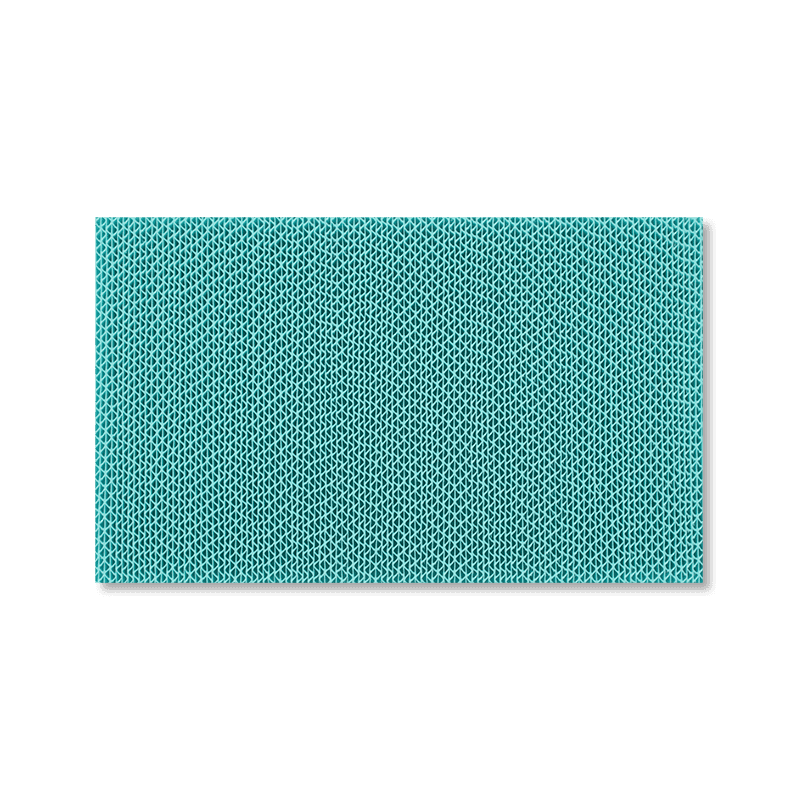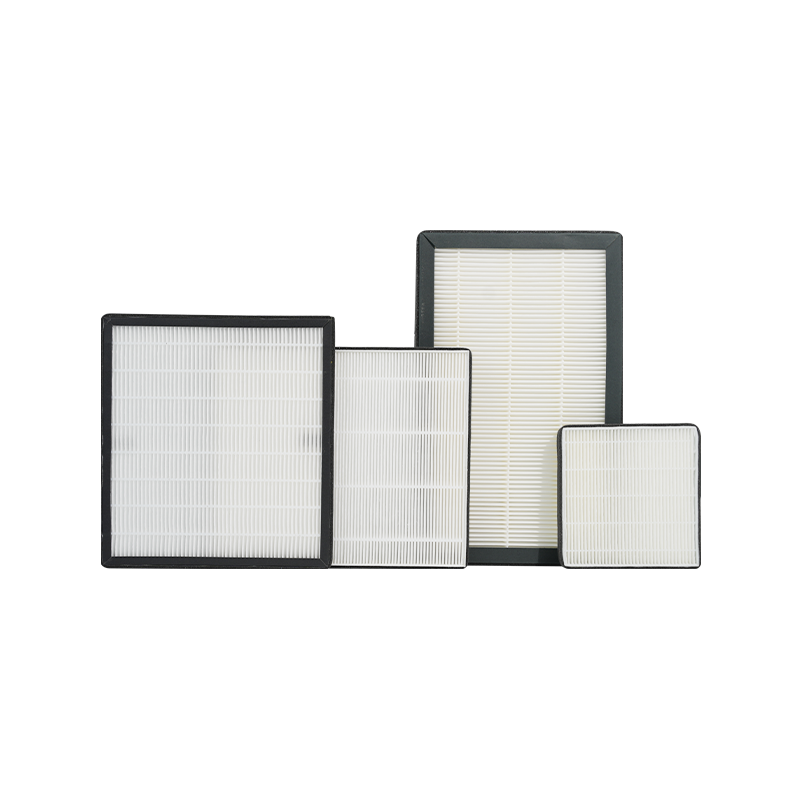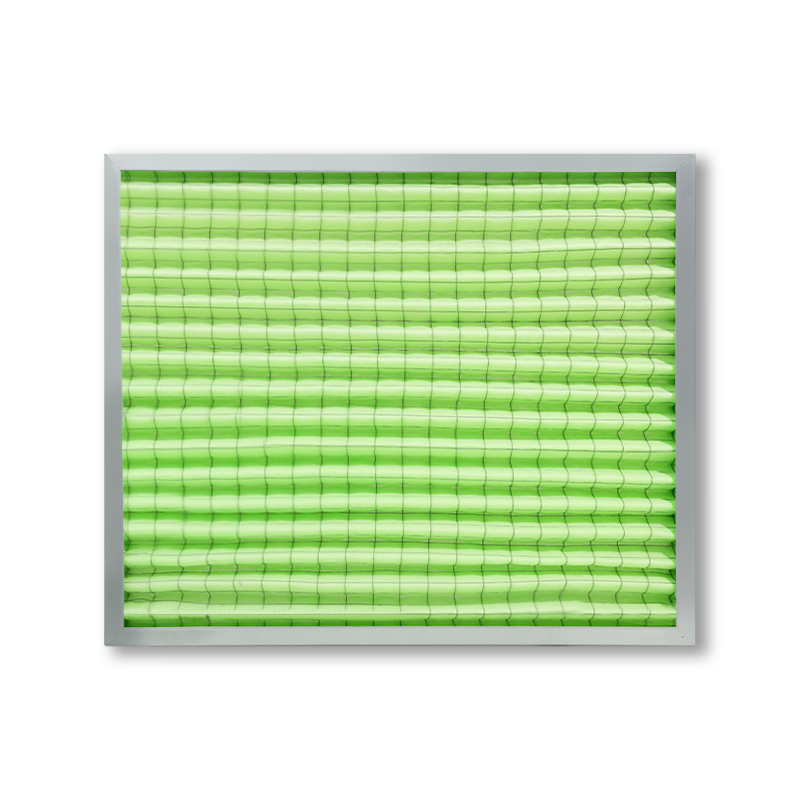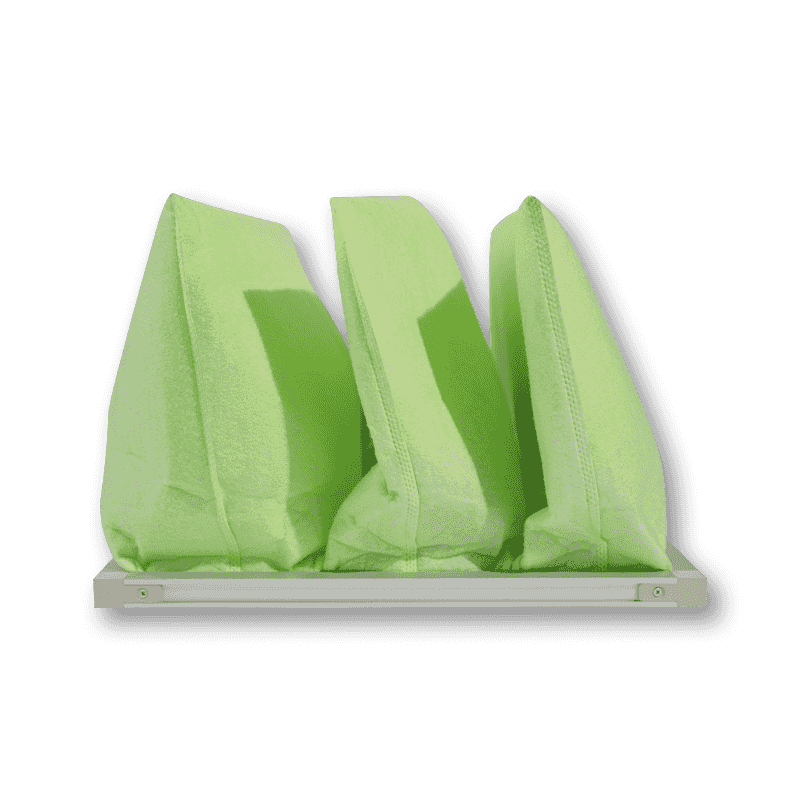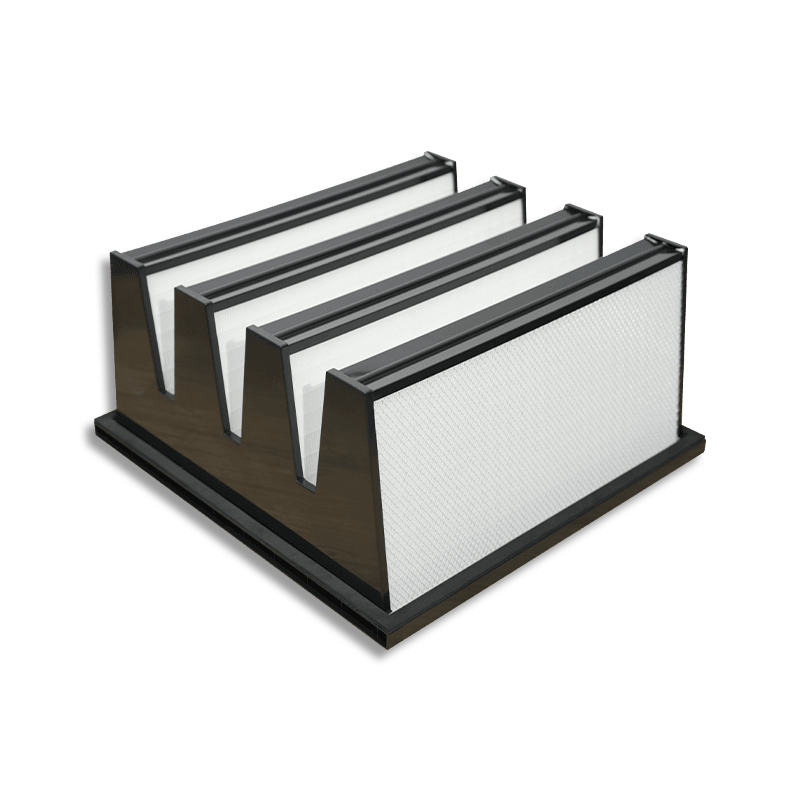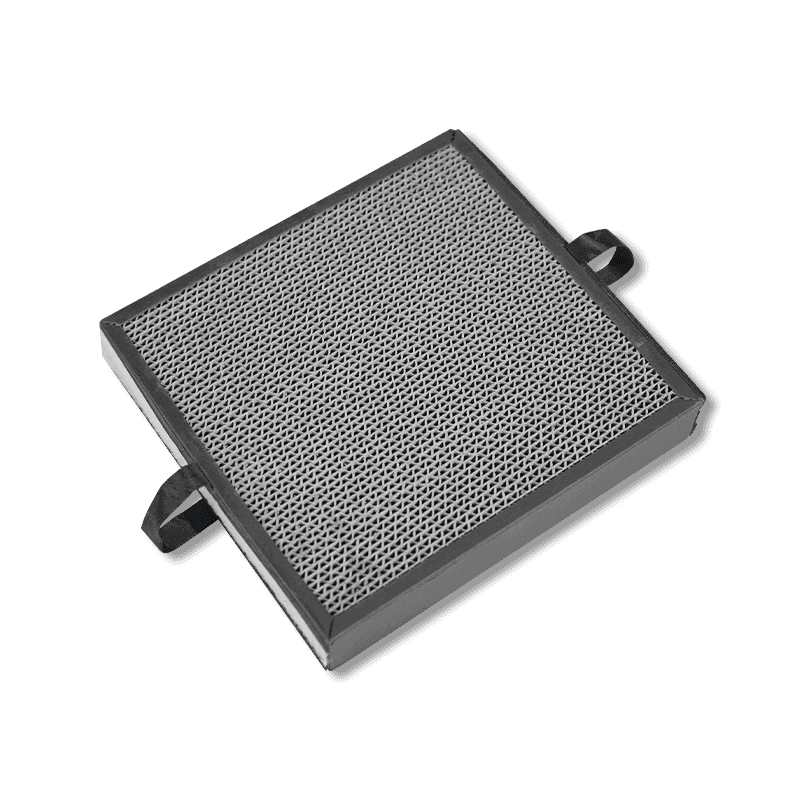1. Pet Odors:
The Role of Activated Carbon in Removing Pet Odors:
Absorbing Volatile Organic Compounds (VOCs):
Pet odors, such as urine or feces smells, are often caused by volatile organic compounds (VOCs)—chemical substances that easily vaporize into the air. These include ammonia, sulfur compounds, and other byproducts of animal waste. When these VOCs are released into the air, they’re what we perceive as unpleasant odors. Activated carbon filters are particularly adept at adsorbing these VOCs, as their large surface area can bind to these molecules and trap them within the filter’s porous structure.
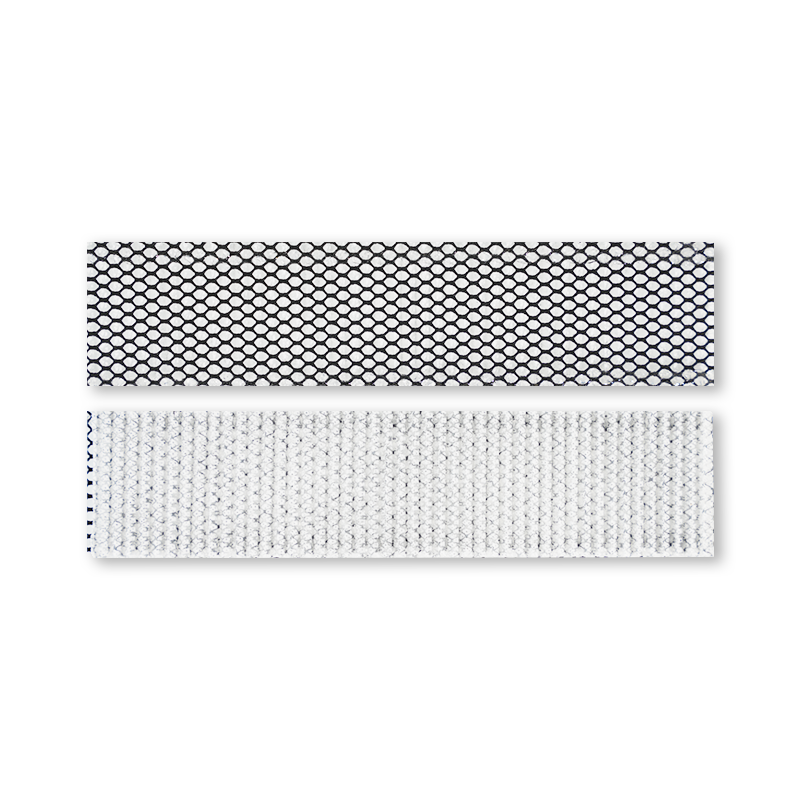
Neutralizing General Pet Body Odors:
Beyond waste odors, pets also have their own unique scent—often due to oils in their fur, natural body odor, or sweat. Dogs and cats secrete oils from their skin that can build up in their fur, and when they shed, those oils can become airborne, contributing to a distinct pet smell. Activated carbon is capable of absorbing these oils and the molecules that cause them, helping to neutralize lingering pet body odors. The filter doesn’t mask the smell but instead traps the molecules responsible for the odor, leaving the air smelling fresher.
Eliminating Dander:
Pet dander is made up of tiny flakes of skin that pets shed, and it’s a major allergen for many people. Though activated carbon filters don’t directly remove the physical dander particles themselves (this is done by HEPA filters), they help with the odors caused by dander, especially the musky or "pet" smell that often lingers in homes with pets. By removing dander-related gases and byproducts, activated carbon helps improve the overall freshness of the air.
Capturing Unpleasant Smells from Wet Pets:
After a rainy walk or bath, pets can often emit a damp or musty smell. Activated carbon filters work to trap these moisture-related odors by adsorbing the compounds that cause them. This is particularly useful in homes with pets that frequently get wet, such as water-loving breeds.
Why Activated Carbon Filters are So Effective:
Large Surface Area:
Activated carbon is porous, meaning it has a vast surface area relative to its size. To put it in perspective, a single gram of activated carbon has a surface area of around 500 to 1500 square meters. This large area allows it to trap a significant amount of odor molecules before it becomes saturated.
Selective Adsorption:
The porous structure of activated carbon allows it to selectively adsorb specific odors. For pet odors, the carbon has a natural affinity for certain molecules found in pet waste, dander, and fur oils, which makes it highly efficient at removing these smells from the air. This selectivity is why activated carbon is often used in products designed to eliminate pet odors specifically.
Long-lasting Odor Control:
Activated carbon filters can provide long-term odor control as long as the filter isn’t overloaded. Depending on the amount of use and the level of odors, the filters need to be replaced periodically, but they can work efficiently for months at a time. This makes them a cost-effective solution for pet owners who want to keep their homes smelling fresh.
Best Practices for Odor Control with Activated Carbon:
Regular Filter Maintenance: Change activated carbon filters according to the manufacturer’s recommendation (usually every 3–6 months).
Combine with HEPA Filters: For the best results, use air purifiers that combine activated carbon filters with HEPA filters. This combination ensures that not only are odors removed but also any pet hair, dander, or allergens.
Use in High-Traffic Areas: Place air purifiers in areas where pets spend most of their time, such as the living room, bedroom, or near the pet’s bed or litter box.
2. Pet Hair & Dander:
How HEPA Filters Remove Pet Hair:
Pet hair, though often larger than other airborne particles, can easily be picked up by HEPA filters due to their dense structure. Here’s how HEPA filters capture pet hair and fur:
Fur Shedding:
Cats and dogs shed their fur regularly, and while a lot of the hair might settle on the floor or furniture, some of it becomes airborne and floats through the air. Even fine pet hair or smaller fibers, like dander-covered strands, can be effectively trapped by the fibers in a HEPA filter.
Trapping Pet Hair:
The tight mesh of a HEPA filter catches individual hair strands as they pass through. While larger clumps of pet fur may settle more quickly and require vacuuming, tiny strands that float through the air or become attached to other allergens are easily captured by the filter, reducing their presence in the air.
Reducing Fur in the Home:
Since HEPA filters capture a significant portion of airborne fur, they can reduce the amount of hair that settles on furniture, clothing, and other surfaces. This can make cleaning easier and help maintain a more hygienic environment, particularly for pet owners with allergies or sensitivities.
How HEPA Filters Remove Pet Dander:
Pet dander is made up of tiny, lightweight particles that come from the skin flakes or scales of animals. These particles can be so small that they remain suspended in the air for long periods, making them especially difficult to avoid. Here's how HEPA filters tackle dander:
Size of Pet Dander:
Pet dander particles typically range from 2 to 10 microns in size, which is well within the size range that HEPA filters are designed to capture. These particles are so small that they often cannot be seen with the naked eye, but they can trigger allergies or asthma in sensitive individuals.
Capture Mechanism:
As pet dander circulates in the air, it passes through the HEPA filter, where the three mechanisms of interception, impaction, and diffusion work together to trap the particles. By capturing these microscopic particles, HEPA filters significantly reduce allergens in the home, improving indoor air quality.
Impact on Allergy Sufferers:
Regular use of an air purifier with a HEPA filter can significantly reduce allergic reactions in pet owners who suffer from dander allergies. By consistently filtering out the airborne dander, HEPA filters can help alleviate symptoms such as sneezing, itchy eyes, and respiratory discomfort.
Additional Benefits of HEPA Filters in Pet-Friendly Homes:
Dust Mites and Other Particles:
HEPA filters also capture other common allergens found in homes, such as dust mites, mold spores, pollen, and bacteria. For pet owners, this means that the air is not only cleared of pet hair and dander, but also of many other irritants that can contribute to poor air quality.
Improved Air Quality:
Over time, as a HEPA filter captures more allergens, the overall air quality in the home improves, resulting in fewer allergens circulating through the environment. This is particularly beneficial for people with respiratory conditions like asthma, who are especially sensitive to airborne particles.
Cleaner Environment:
The cleaner air reduces the amount of pet-related allergens that can settle on surfaces such as furniture, bedding, and curtains. This means fewer allergens to clean up, making your home easier to maintain and reducing the overall buildup of pet-related mess.
3. Other Benefits:
Pre-Filters: The First Line of Defense
Pre-filters are designed to catch larger particles in the air before they reach the more delicate, high-efficiency filters like HEPA or activated carbon. Think of them as a kind of "screen" that removes the bulkier debris, ensuring that the primary filters aren’t clogged up too quickly. Let’s break down their role and importance:
How Pre-Filters Work:
Pre-filters are typically made from a coarse mesh material, which could be made of foam, fabric, or polyester. Their job is to trap particles that are too large to be effectively handled by the more specialized filters. When air flows into the purifier, these larger particles are intercepted by the pre-filter, and the air that moves onward is cleaner and free of significant debris.
Benefits of Pre-Filters in Pet Homes:
Trapping Larger Pet Hair and Fur:
Pets, especially dogs and cats, shed hair regularly. While small dander particles can be handled by HEPA filters, the larger pet hair strands can get caught by pre-filters. This ensures that the HEPA filter isn't overloaded with larger particles, allowing it to work more efficiently with the smaller particles like dander.
Reducing Filter Wear and Tear:
Since pre-filters capture the larger particles, they reduce the amount of debris that would otherwise accumulate in the HEPA or activated carbon filters. This results in longer-lasting main filters and can prolong the lifespan of the purifier overall.
Improving Airflow:
By removing larger particles early on, pre-filters help maintain strong and consistent airflow throughout the purifier. Without them, large particles could accumulate within the purifier, potentially causing blockages or reducing the airflow. This is especially important for maintaining optimal performance.
Easy to Clean and Maintain:
Pre-filters are generally designed to be washable or easily vacuumed. This makes maintenance easier and more cost-effective. Pet owners can clean or replace pre-filters regularly to ensure their air purifier continues to perform at its best.
Pre-Filters and Efficiency:
Some air purifiers allow pet owners to wash or vacuum the pre-filter multiple times before it needs replacing, which further enhances the cost-effectiveness of the purifier. Pet owners with heavy shedding animals may especially benefit from this feature, as pre-filters can handle a lot of the initial load before the finer, more expensive filters need to be changed.

 English
English Español
Español 日本語
日本語
